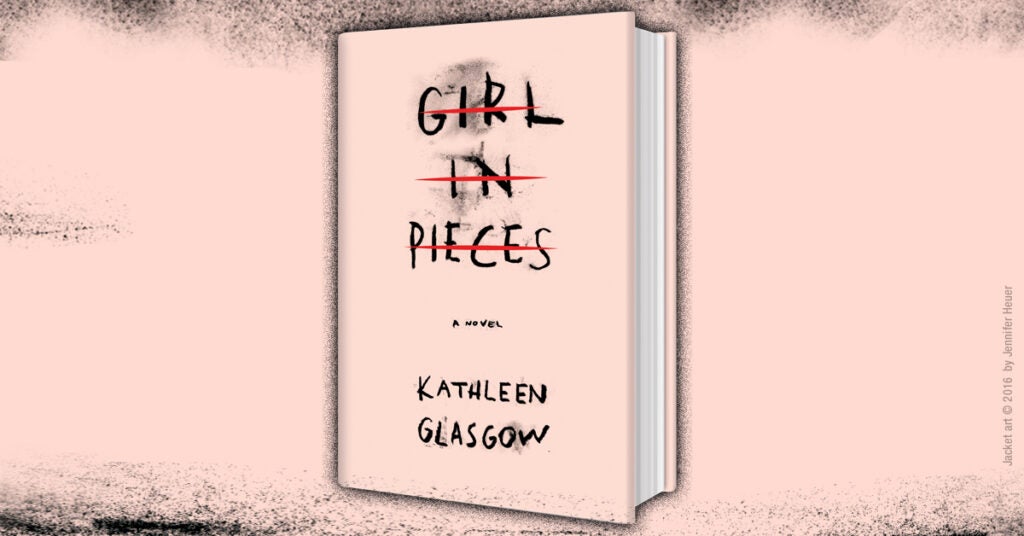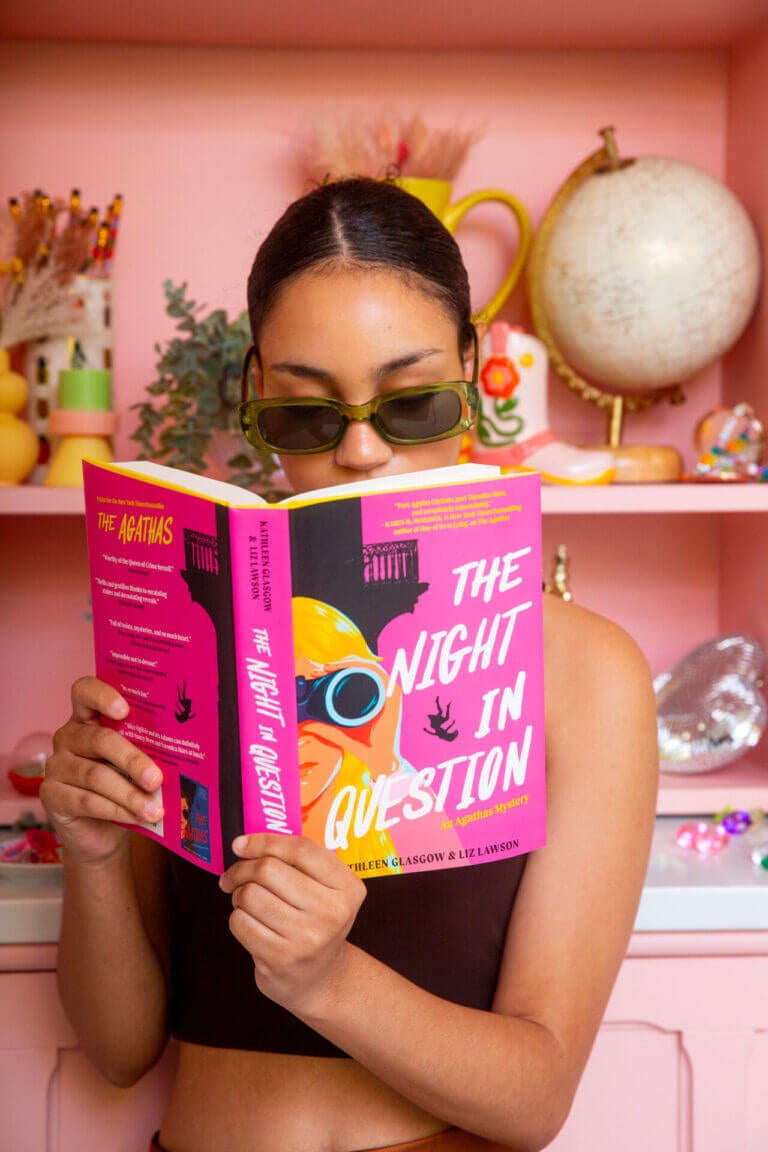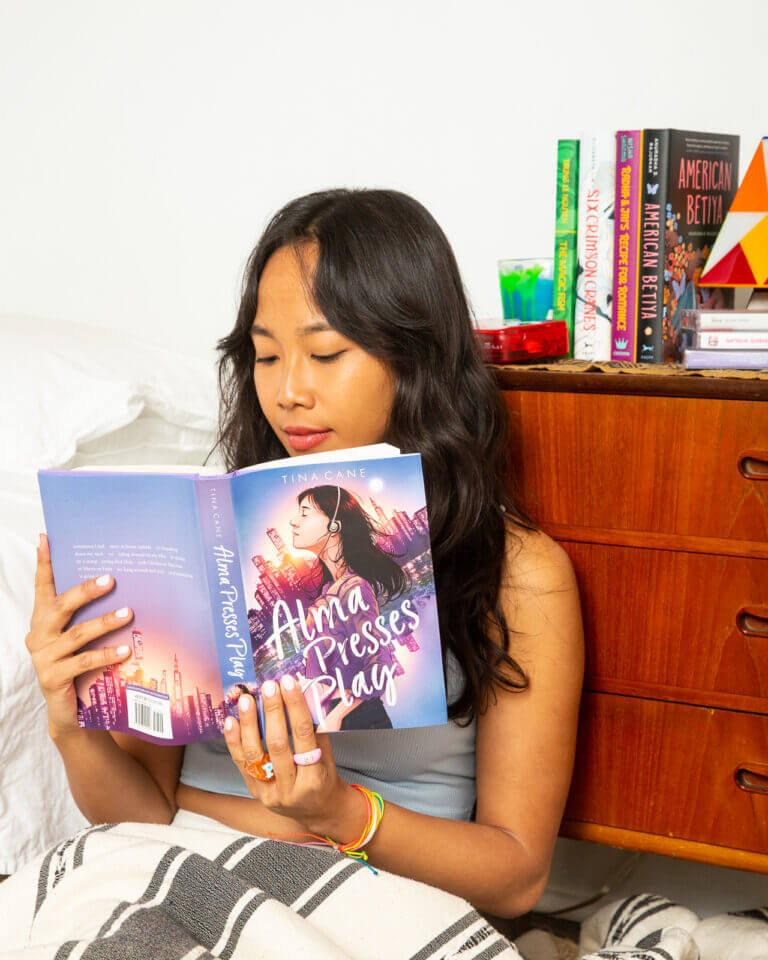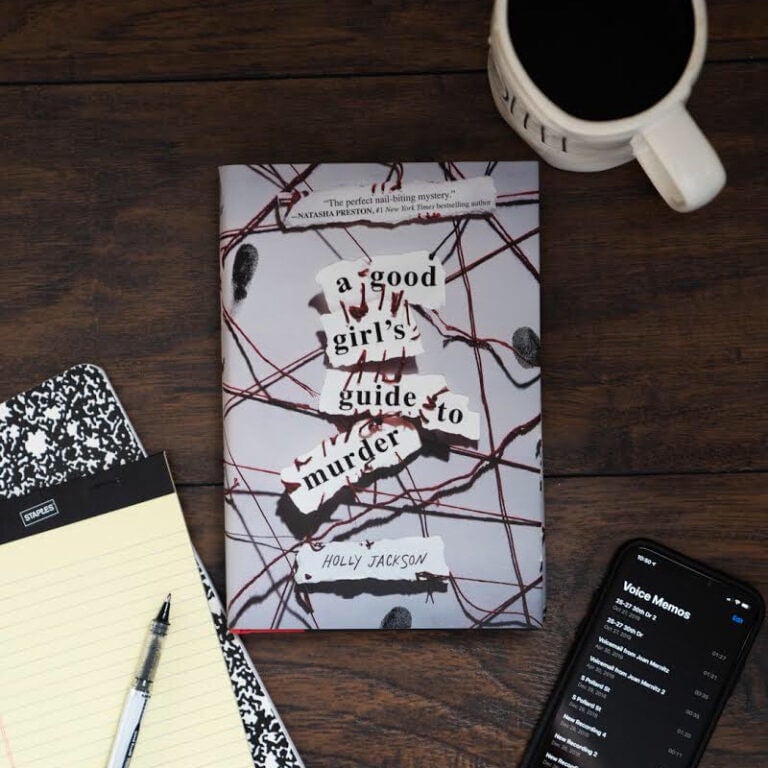
One of our favorite Book Nerd activities is going to book club! Book clubs create community, help us get through our TBR pile, discover new faves, and allow space to talk about our favorite characters. To help with your book club endeavors, we’ve created book club guides for some of our favorite YA titles. This book club guide will help you get the most out of New York Times bestseller Girl in Pieces by Kathleen Glasgow.
If you’re looking for other book club articles, check out 10 Easy Steps to Hosting a Virtual Book Club and don’t forget to tag @getunderlined whenever your book club meets!
GIRL IN PIECES BOOK CLUB DISCUSSION GUIDE | BEFORE YOU READ . . .
Change.
Have you ever been stuck in a pattern of behavior that was negative, or needed to make a change in your life?
How did you break the pattern?
Who helped you make the positive changes that you needed to make?
Family.
How do you define a family?
What are the bonds that make up your family?
Who are the people you would go to for help, if you were ever in trouble?
GIRL IN PIECES BOOK CLUB DISCUSSION GUIDE | DISCUSSION QUESTIONS
Alone.
Charlie notes, “There is being alone, and then there is being alone. They are not the same thing at all” (p. 108).
What does Charlie mean by this difference?
What are the times in her life when she feels most alone, and why?
How does she feel about being alone?
Darkness.
As Charlie describes Ariel’s paintings, “It seems like the darkness is almost trying to leave the whole thing, because the little light is back there, and it’s turning its back on the light” (p. 134).
What does the idea of darkness represent to Charlie? To Ariel? To Riley?
What are the dark places in Charlie’s life, and where does she find a little light?
Do you think Charlie will ever be completely free from her dark places?
Cross.
After meeting Ariel, Charlie steals a cross from her house: “Ariel has taken a little from me tonight and so I am taking a little of her” (p. 136).
Why do you think Charlie feels compelled to take Ariel’s cross?
What do you think the cross represents to Charlie, and how does its meaning change for her over time?
Why does Charlie ultimately return the cross to Ariel, and what does that reveal about her journey?
Kindness.
Ariel explains to Charlie, “The world runs on kindness” (p. 200). In the depths of her pain, Charlie still has people who try to save her.
Who are the different people in Charlie’s life who reach out to her with kindness, and how do they do so?
What motivates them to help her?
How does Charlie respond to their kindness, and how do her responses change throughout the novel?
Shame.
As she watches Riley’s alcoholism escalate, Charlie remembers Ellis: “My stomach churns with shame. I didn’t help her and I lost her” (p. 207).
Why does Charlie feel responsible for what happened to Ellis?
How do her feelings about Ellis shape the choices that Charlie makes throughout the novel?
Do you think Charlie should have done more to help the people who needed it most, like Ellis, or Louisa, or Riley?
Could she have done more to help herself ?
Losing.
What do you think are Charlie’s most significant lost things—mental, physical, or emotional?
What are some of the ways, including self-harm, that Charlie tries to cope with her losses, and what are their effects?
Using.
What are the consequences for Charlie, and for others?
Does Charlie recognize that she is being used?
In what ways might Charlie be using others in return?
Mirror.
After meeting Blue, Riley tells Charlie, “Everybody you meet is like a little mirror of you” (p. 318).
In what ways do the different people Charlie meets mirror her, in both good and bad ways?
What does Charlie come to learn about herself through her relationships with others?
Momentous.
Felix suggests that “Everyone has that moment, I think, the moment when something so . . . momentous happens that it rips your very being into small pieces” (p. 355).
How does Felix’s advice help Charlie to understand herself as a “girl in pieces”?
Have there been times in your own life that were “momentous,” in either good or bad ways?
You.
As Charlie prepares to leave Creeley, Casper tells her, “You own all of yourself, Charlie. Every last bit” (p. 95). Much later,Felix tells Charlie, “You be you, Charlotte. You be you” (p. 367).
Why do these mentor figures give her this advice? In what ways does Charlie succeed or fail in trying to follow their advice?
Do you think that by the end of the novel, Charlie finally achieves it?
Mother.
Charlie doesn’t believe Linus when she tells her, “I don’t know the story of your mom, but I have to believe she’s hoping somebody is looking out for you” (p. 368).
Why does Charlie disagree with her? How has Charlie’s relationship with her mother affected her, and her life?
How might Charlie’s story look different if were told from her mother’s point of view?
Choice.
Blue explains to Charlie, “Sometimes with people, you just become something, like, your role happens to you, instead of you choosing it” (p. 371).
How might this statement apply to Charlie’s experiences, too?
What are the choices that Charlie makes for herself throughout the novel, versus the choices made for her by other people?
How do the choices that Charlie makes reflect her character development?
Love.
How does Charlie’s understanding of love change throughout the novel?
Voice.
At the start of the novel, Charlie exhibits selective mutism, and she continually struggles to talk to others. However, once Charlie finishes drawing Louisa’s story, she says, “I have a voice. I have a place for my voice. . .. It’s time for me to speak again” (p. 365).
How do other characters respond to Charlie’s silence?
Why do you think Charlie is finally ready to speak again?
Cereal.
Charlie takes the advice to heart when Blue tells her, “Don’t let the cereal eat you. It’s only a fucking box of cereal, but it will eat you alive if you let it” (p. 94).
When are the times Charlie becomes worried that the cereal is “eating her alive,” and what does that represent?
Why do you think Blue uses cereal as a metaphor for her feelings?
Has there been a time when you could relate to that feeling?
Lyrics.
GIRL IN PIECES BOOK CLUB DISCUSSION GUIDE | ADDITIONAL ACTIVITIES
Comics.
Music.
Facebook.
Color.
Streets.
This guide was created by Laura Schick, a librarian at Jesuit High School in Portland, OR.RHTeachersLibrarians.com
Did you enjoy this Girl in Pieces book club discussion guide? Get social with us at @getunderlined!





